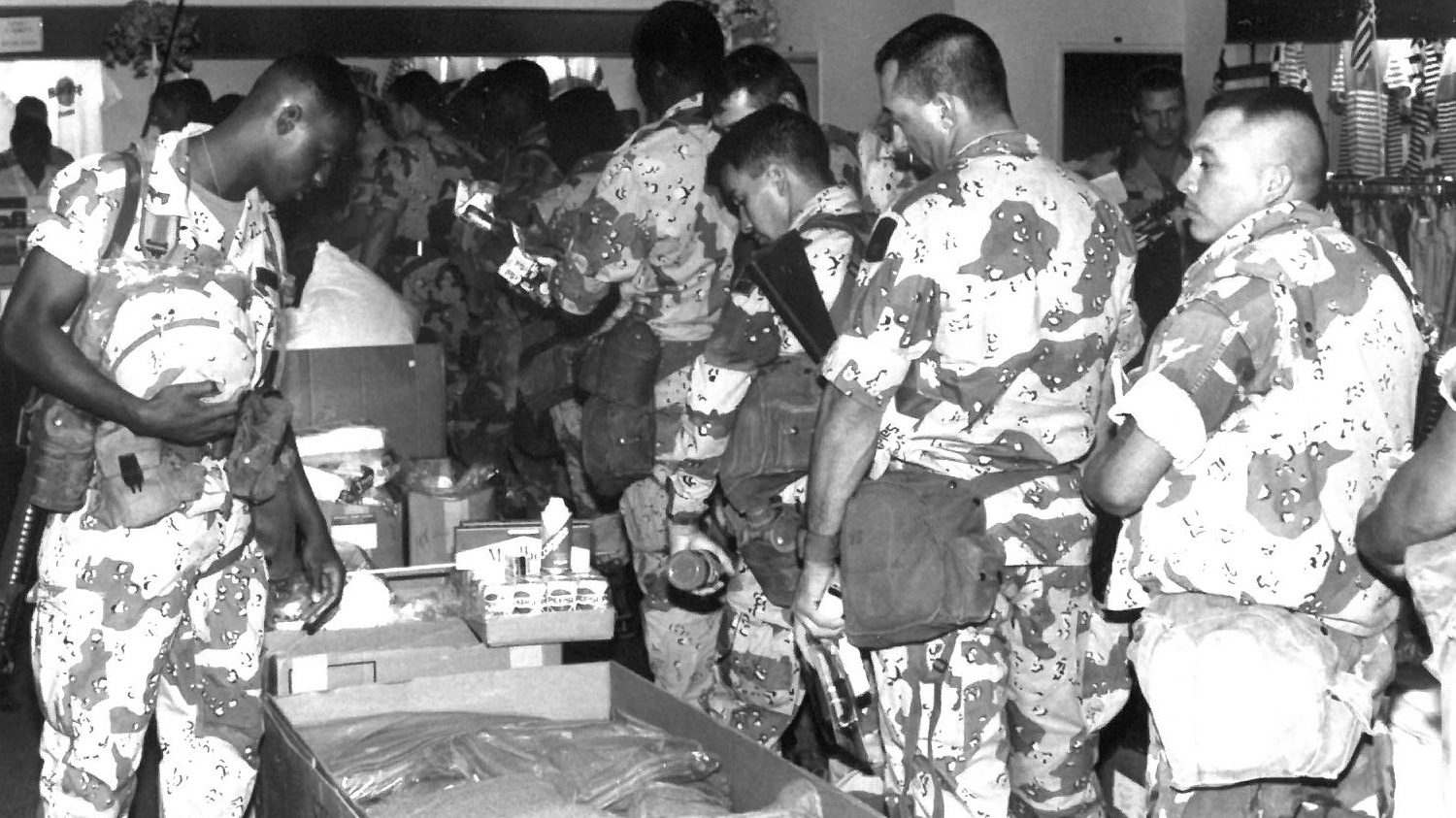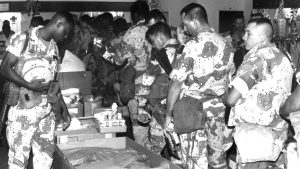#FlashbackFriday: During Operation Desert Shield, a Distribution Center is Built From Scratch

On Aug. 2, 1990, Iraq invaded Kuwait. The U.S. responded quickly, deploying F-15 fighter aircraft into Saudi Arabia within a week. That was the beginning of Operation Desert Shield, which became Operation Desert Storm when fighting began.

U.S. troops browse Exchange merchandise brought to their installation in Saudi Arabia during Operation Shield/Storm. From just three small stores in Saudi Arabia, AAFES quickly built an entire exchange and distribution system to support more than a half-million troops deployed to Saudi Arabia and Kuwait. (Exchange History Flickr)
The Exchange also responded quickly, including almost immediately beginning negotiations for warehouse space for a Saudi Arabia-based distribution center. On Aug. 27—31 years ago today—the owner of a brick complex, with buildings divided into 16 bays with walls, promised that the walls would come down within 10 days of a lease signing, giving the Exchange about 60,000 square feet in each building. Despite some drawbacks in the complex—such as no sewage facilities—the Army agreed to lease it for the Exchange.
Renovation wasn’t simple. Telephone and data communication capabilities and a computerized inventory control system had to be established quickly. Electricity, air conditioning, security system and shelving were installed—and most of the materials had to be shipped from Exchange facilities outside Saudi Arabia. Forklifts were shipped in from Germany, Turkey and Greece.
The Saudi Distribution Center officially opened on Sept. 19 with 120,000 square feet of warehouse space. By Sept. 27, 340,000 square feet of hardstand area for trailers was completed. By Oct. 1, the center had received 90 containers with 528 more en route. A small DC team, working with minimal equipment, sorted containers packed with more than three dozen varieties of products, so that the merchandise could quickly get to deployed troops.
In the spring of 1990, the Exchange had a main store, two smaller stores and a mobile exchange in Saudi Arabia. By the end of January 1991, it not only had the distribution center, but 15 direct-operated facilities, 138 field exchanges, 26 food outlets and 11 barbershops in the country.
Through January, when Operation Desert Shield became Operation Desert Storm, and February, when hostilities ceased at the end of the month, the Saudi Distribution Center team worked practically nonstop. After the war ended, the DC found itself with a surplus of inventory as troops returned to the States. The Exchange worked with vendors to cancel purchase orders and divert containers to other locations. Some merchandise—including Pringles potato chips and all available Charmin toilet paper—was sold to the Kuwaiti government at Kuwait’s request. The Army and Navy also bought some of the surplus merchandise.
On June 15, the Saudi Distribution Center closed, and the last Exchange distribution associates left Saudi Arabia on June 23.
Sources: One Hundred Years of Service: A History of the Army and Air Force Exchange Service, Exchange Post archives

